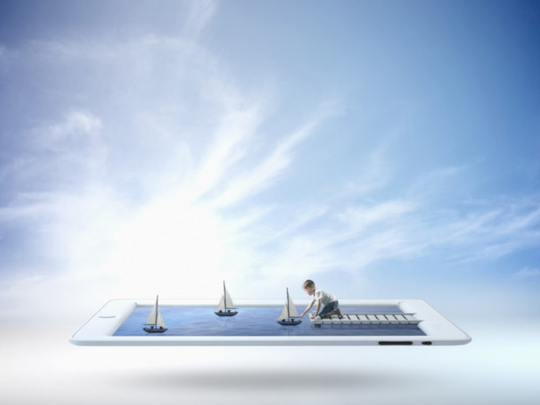
Francois Dao, Vice-President of Industry Business at energy management specialist Schneider Electric declares, “Water is the next energy.” He says a billion people (or one in seven) lack access to safe drinking water, but adds, reassuringly, that awareness of the need to value and conserve this precious resource is “increasing dramatically”.
This is especially so in the UAE, which has to deal with two significant water matters: a growing population and a scarcity of natural water resources. Dao says the average recorded rainfall in the UAE is a mere five days per year, and reminds us that at last year’s International Water Summit in Abu Dhabi, General Shaikh Mohammad Bin Zayed Al Nahyan, Crown Prince of Abu Dhabi and Deputy Supreme Commander of the UAE Armed Forces said, “For us, water is [now] more important than oil.”
More than 90 per cent of the water on Earth is non-potable, and as groundwater levels deplete, the best way to keep the taps running will be to make sea and waste water potable.
Innovative solutions that have garnered a lot of positive press include the $5 (Dh18) LifeStraw filter, a mobile water purification tool that turns polluted water 99.9 per cent pure without requiring electricity. And the Slingshot purifies 1,000 litres of water daily including sewage water. As a by-product, the Slingshot generates enough electricity to power light bulbs.
Dr Calvin Finch, Director of the US-based Water Conservation and Technology Center, writes in the magazine txH2O, “Technology at many levels is a major part of water conservation now, and great opportunities for advances exist that will increase [in] importance in producing water from conservation activities.”
In fact, a major technological thrust in the Middle East is the building of the Smart Water Network. Schneider Electric is working with cites including Doha, Dubai, Abu Dhabi, Riyadh and Jeddah to “help them achieve their goals of becoming smart cities”. The company has deployed more than 7,500 research and development engineers worldwide to work on advanced 3D simulation technologies, and solutions that are “greener, simpler and easier to integrate into the daily environment”. A tangible result has been the conservation of water through active leak detection, pressure management and integrating different components under one platform.
Dao claims that a reduction of 15 per cent in water usage can be achieved by tapping into real-time data from pumps, tanks, valves and other vital distribution network points. The World Bank estimates that up to 25-30 per cent of water disappears during supply, typically through leaks. In developing countries, around 45 million cubic metres of water is lost daily — enough for 200 million people. Worldwide this adds up to around $14 billion in annual losses to water utilities.
Dr Finch believes water conservation is not just a behavioural exercise but also a technological one. “People can be taught to save water by turning off the tap while brushing their teeth. Successful water conservation, however, is just as dependent on technological factors.”
A brand that has made water conservation its primary focus is Hansgrohe, which was recently awarded the Abu Dhabi Environmental Performance Trustmark — a certification for complying to environmental and sustainability standards. Its EcoSmart technology uses a sophisticated water dimmer that reduces flow from 14.5 litres per minute to 6 litres/min in hand showers, and 13.5 litres/min to 3.5 litres/min in taps, resulting in up to 60 per cent less water usage.
Dirk Schilmoeller, Sales Director — Middle East at Hansgrohe, adds, “EcoSmart and AirPower green technologies are a cornerstone of our water-saving technologies. However, since a reduced water flow can sometimes mean a reduction in showering pleasure, we have come up with AirPower technology, which mixes water with air. Using the Venturi effect, which acts as a jet, AirPower technology increases the overall volume of water, creating rich, soft-flowing water droplets.”
Schilmoeller believes that more often than not, “cheap, poorly built bathroom products cost dearly in the long run in terms of high consumption costs”. To illustrate this, Hansgrohe has developed a mobile and online savings calculator that allows consumers to estimate, based on consumption, the difference between using smart green technologies and conventional taps or showers. Schilmoeller is confident awareness around sustainability and water conservation in the region will continue to grow, and that a shift towards using more sustainable materials will occur.
As well as in homes, a bit of lateral thinking can go a long way in offices. Dr Finch says, in hot, dry countries “condensate from air conditioners may be more reliable and efficient to use.”
The Alliance for Water Efficiency estimates that the amount of condensate can range from three to ten gallons per day for each 1,000 square foot of air-conditioned space.
Water and oil may not mix well, but water could well become the next oil.












